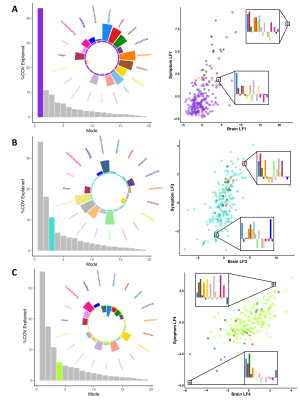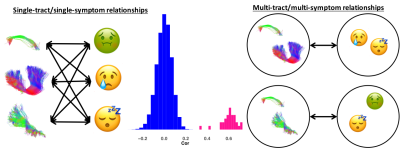Guido I. Guberman1, Sonja Stojanovski2,3, Alain Ptito1, Danilo Bzdok4, Anne Wheeler2,3, and Maxime Descoteaux5
1Department of Neurology and Neurosurgery, McGill University, Montreal, QC, Canada, 2Neuroscience and Mental Health Program, Hospital for Sick Children, Toronto, ON, Canada, 3Department of Physiology, University of Toronto, Toronto, ON, Canada, 4Department of Biomedical Engineering, McGill University, Montreal, QC, Canada, 5Department of Computer Science, Université de Sherbrooke, Sherbrooke, QC, Canada
1Department of Neurology and Neurosurgery, McGill University, Montreal, QC, Canada, 2Neuroscience and Mental Health Program, Hospital for Sick Children, Toronto, ON, Canada, 3Department of Physiology, University of Toronto, Toronto, ON, Canada, 4Department of Biomedical Engineering, McGill University, Montreal, QC, Canada, 5Department of Computer Science, Université de Sherbrooke, Sherbrooke, QC, Canada
A double-multivariate approach differentiated children with histories of concussion based on complex symptom/structure combinations. Expression of connectivity latent factors predicted adverse psychiatric outcomes in unseen data.

Illustration of 3 modes of covariance, displaying the covariance explained (bar graph), the loading profile of the symptom latent factor (polar bar graph), a scatter plot showing the projection of symptom and connectivity data onto their respective latent spaces, and bar graphs showing scaled symptoms for 6 illustrative cases (2 per graph). A. Mode 1 from PLSc on PC1 features. B. Mode 3 from PLSc on PC2 features. C. Mode 4 from PLSc on PC2 features.
